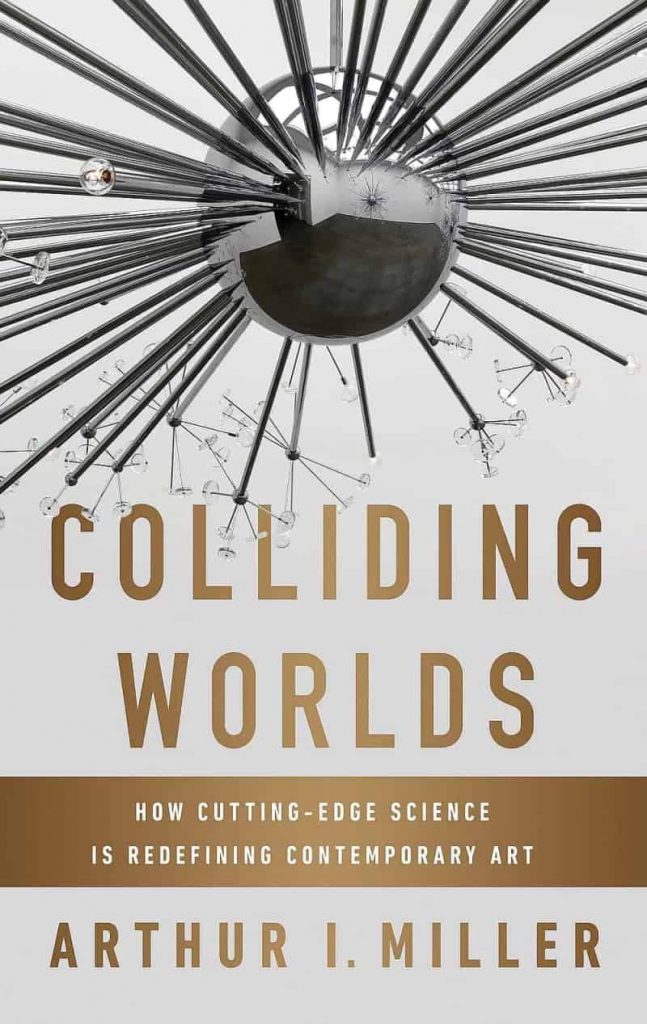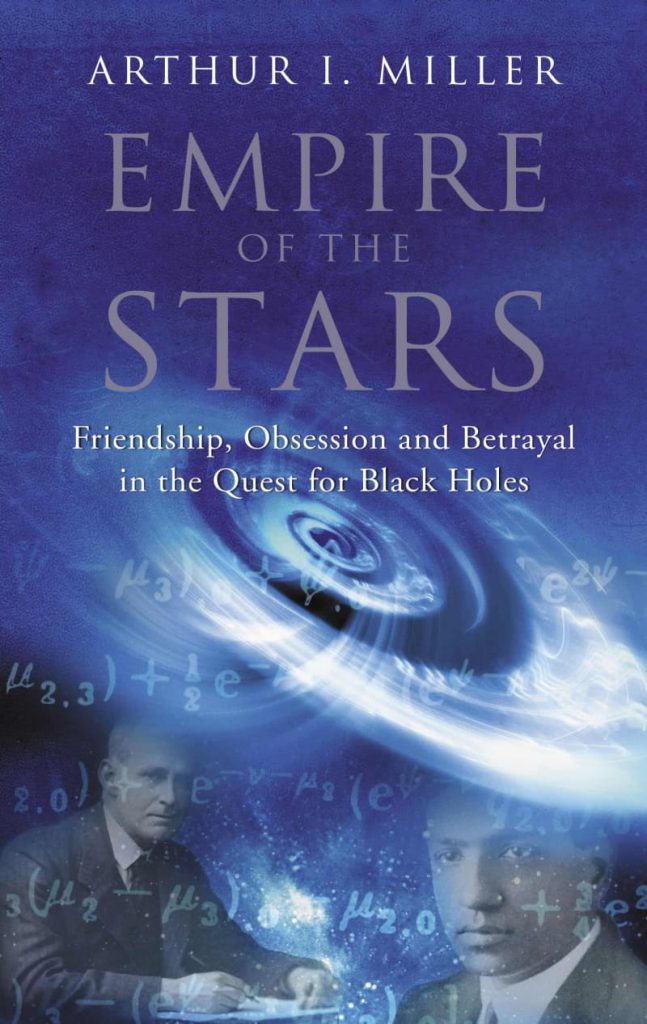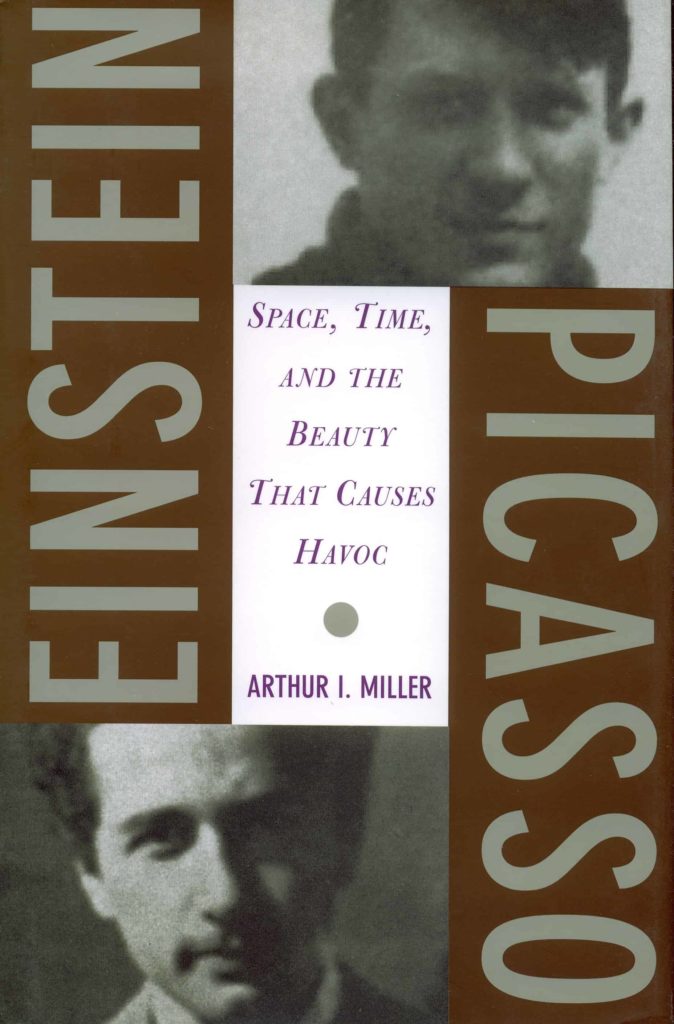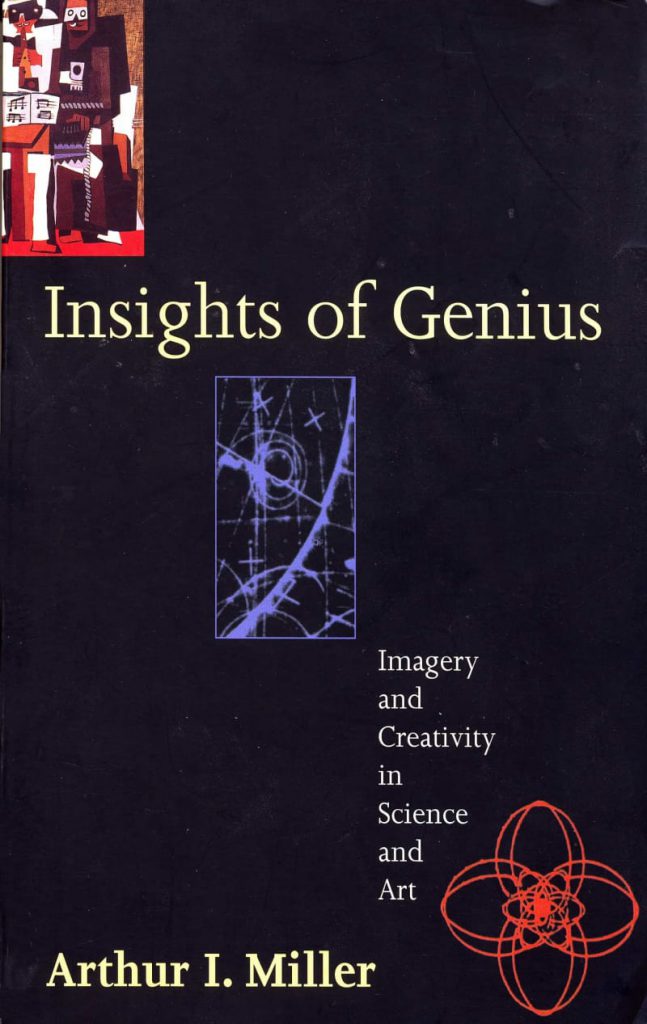
The Artist in the Machine: The World of AI-Powered Creativity
For more – much more – please see ArtistintheMachine.net
In The Artist in the Machine: The World of AI-Powered Creativity Arthur I. Miller takes us on a tour of creativity in the age of machines.
Today’s computers are composing music that sounds “more Bach than Bach,” turning photographs into paintings in the style of Van Gogh’s Starry Night, and even writing screenplays. But are computers truly creative—or are they merely tools to be used by musicians, artists, and writers?

Colliding Worlds: How Cutting-Edge Science is Redefining Contemporary Art
Colliding Worlds: How Cutting-Edge Science is Redefining Contemporary Art takes readers on a wild journey to explore a new frontier.In recent decades, an exciting new art movement has emerged in which artists illuminate the latest advances in science. Some of their provocative creations—a live rabbit implanted with the fluorescent gene of a jellyfish, a gigantic glass-and-chrome sculpture of the Big Bang itself—can be seen in traditional art museums and magazines, while others are being made by leading designers at Pixar, Google’s Creative Lab, and the MIT Media Lab.
From the movement’s origins a century ago—when Einstein’s theory of relativity shaped the new modern art and X-rays affected fine photography—to the latest discoveries of biotechnology, cosmology, and quantum physics, find out how today’s artists and designers are producing work at the cutting edge of science.

Deciphering the Cosmic Number: The Strange Friendship of Wolfgang Pauli and Carl Jung
In it I explore how Carl Jung analysed the dream imagery of one of his most famous patients, the ground-breaking physicist Wolfgang Pauli. Pauli’s unconventional and wild life brought him to the brink of a mental breakdown. He obsessed over how he had made his greatest discovery, feeling that he had tapped into something beyond physics.

Empire of the Stars: Friendship, Obsession and Betrayal in the Quest for Black holes
August 1930. On a voyage from Madras to London, a young Indian looked up at the stars and contemplated their fate. Subrahmanyan Chandrasekhar – Chandra, as he was called – calculated that certain stars would suffer a strange and violent death, collapsing to virtually nothing. This extraordinary claim, the first mathematical description of black holes, brought Chandra into direct conflict with Sir Arthur Eddington, one of the greatest astrophysicists of the day. Eddington ridiculed the young man’s idea at a meeting of the Royal Astronomical Society in 1935, sending Chandra into an intellectual and emotional tailspin – hindering the progress of astrophysics for nearly forty years.
Empire of the Stars is the dramatic story of this intellectual debate and its implications for twentieth-century science.

Einstein, Picasso: Space, time and the beauty that causes havoc
The most important scientist of the twentieth century – Albert Einstein – and its most important artist- Pablo Picasso – went through their period of greatest creativity almost simultaneously and in remarkably similar circumstances.
This parallel biography of Einstein and Picasso as young men focuses on their greatest achievements: Einstein’s special theory of relativity and Picasso’s Les Demoiselles d’Avignon, the painting that brought art into the twentieth century. When they produced these astonishing breakthroughs, Einstein and Picasso were in their twenties, unknown, feisty, dirt-poor, and prone to getting into trouble. For a while, Picasso even carried the playwright Alfred Jarrey’s pistol – loaded with blanks – with which he would shoot people who struck him as overly dull or earnest.

Insights of Genius: Imagery and creativity in science and art
How can new knowledge be created from already existing knowledge? How can the conclusion go beyond the premises?
This book brings together some of the profoundest mysteries of art and science: What is the nature of creativity? Why is seeing in all its many forms – insight, revelation, a distinctive point of view – so central to the greatest advances of the human intellect? How do we allow for boundless human creativity in the sciences and yet retain our belief in a single underlying reality?